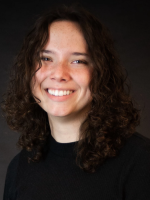At Golden Age Nursing Home in Guthrie, circle time is an activity for all ages. The facility hosts an all-day, intergenerational pre-K in partnership with Guthrie Public Schools. The nursing home provides the classroom and playground, and the district supplies curriculum and instructors.
This year’s class and Golden Age residents are just starting to get to know each other. They gathered in the nursing home’s lobby to play “show and share.” Students brought everything from a stuffed cat named “Kitty” to a brontosaurus figurine.
And Golden Age resident Brenda Gilliland brought her porcelain doll, Lady Mary. She got the doll later in life because her parents couldn’t afford one. She said sharing Lady Mary with students brought back memories.
“It was a lot of fun, and I hope that some of them will get some dolls, and maybe later they can share their story,” Gilliland said.
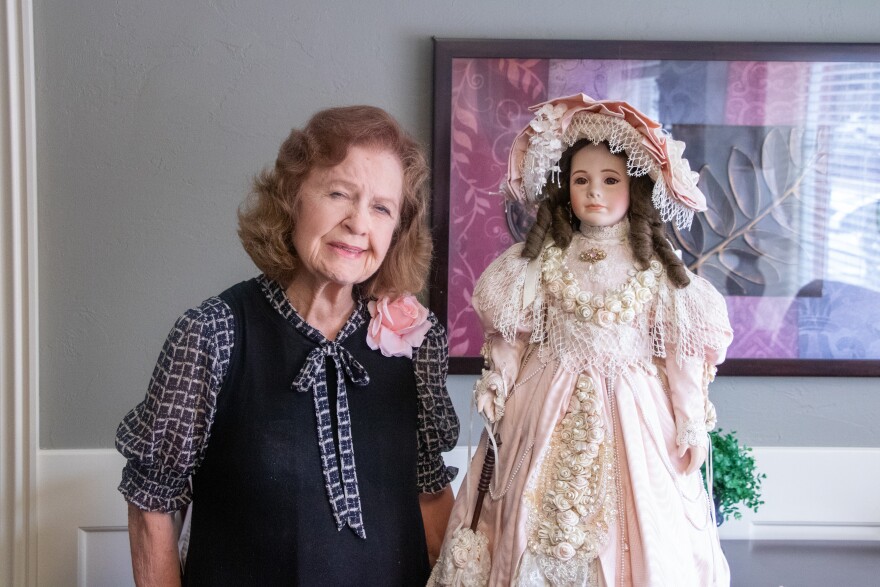
The pre-K at Golden Age is a type of intergenerational programming. The strategy works to bring different age groups together through ongoing, mutually beneficial activities. They’re designed to achieve program-specific goals and promote greater understanding and respect among different generations.
As Oklahoma’s aging population grows, providers and state officials are searching for ways to facilitate meaningful connections for a group that is more likely to feel lonely or be socially isolated. The intergenerational model is gaining traction, as state officials work to expand its reach and target positive outcomes for children and seniors.
What are intergenerational programs?
Historically, people lived in more multigenerational communities, said Sheri Steinig, the director of strategic initiatives and communications at Generations United. The nonprofit focuses on promoting intergenerational collaboration and support.
But as society progressed during the 20th century, Steinig said it became more age-segregated. Multigenerational households declined, reaching lows of 12% of the population in 1980 compared to 21% just three decades earlier. That decrease is associated with many factors, including the introduction of Medicare and better access to transportation, which made it easier for families to visit each other.
Steinig said one of the first intentional intergenerational programs was created in the ‘60s. The Foster Grandparent Program offers stipends to low-income older adults who provide services such as mentorship or tutoring to children. She said intentional programming involving intergenerational connection has evolved since then.
“People started [saying] we need to program for this because while it does happen, it's not happening as much as it should and it's not happening as much as it used to. And it doesn't have to only happen within the family,” Steinig said.
Now, Generations United is tracking over 800 intergenerational programs across the U.S., with at least one in every state.
Steinig said models exist in different forms, including clubs or as an after-school activity. Generations United works to support shared spaces, where both generations are in close proximity to each other.
“There's so many factors that make it tough for kids to leave classrooms and safety and everything else. Once you break down that primary barrier and challenge … then you can plan activities,” Steinig said. “But then you also know when the kids are outside playing that adults can also be outside or can be looking out the windows. There's sort of those formal and informal interactions that can happen in that space.”
Research compiled by Generations United shows the strategy helps decrease social isolation, improve quality of life and provide a sense of purpose for seniors. Children who participate reportedly experience greater reading comprehension, problem solving and sensitivity toward others.
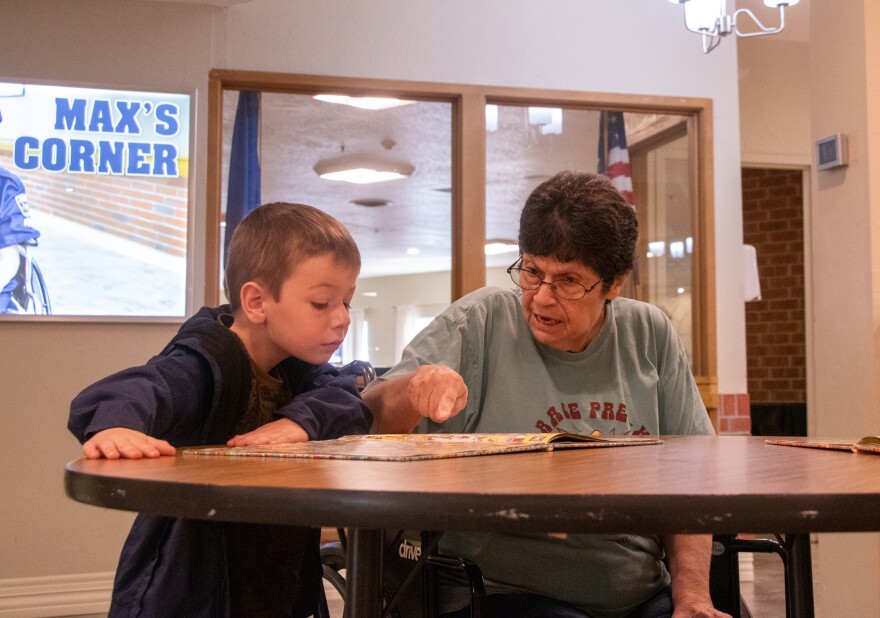
Grace Skilled Nursing & Therapy in Jenks brought the first program of its kind to Oklahoma in 1999 in partnership with Jenks Public Schools, said President and CEO of Bridges Health Brett Coble. Now, their organization has four locations with intergenerational programs, including Muskogee, Enid and Norman.
In collaboration with Norman Public Schools, for example, the Grace Norman location offers two pre-K classrooms. Bridges Health hired Lori Branson as a liaison for NPS and Bridges Health. She came up with the idea to call residents “grandfriends.”
Students participate in everything from book buddies and puzzles to monthly adventures, where program participants learn about different countries, Branson said. Last month, they “visited” France together and tried French food, watched videos about the country and listened to their language.
Branson said the grandfriends and pre-K students build pretty immediate bonds. And those connections help children shed stigmas associated with nursing homes and become aware of people with different abilities at an early age.
“I feel like it takes no time at four years old,” Branson said.
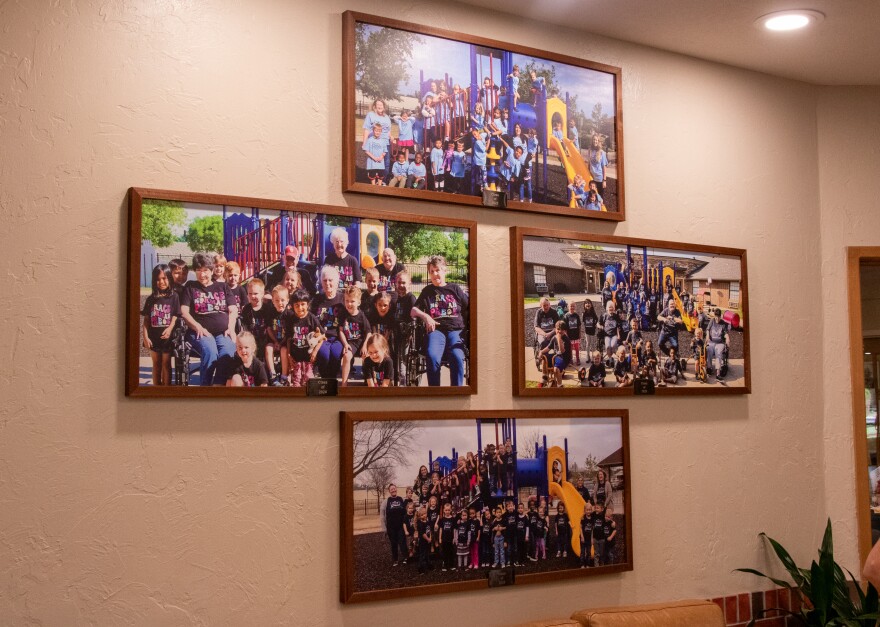
Bridges Health Regional Manager Josh Wood said they have seen the impacts observationally, but they hope to measure outcomes in a quantifiable way by looking back at data from 2019 to present to see how things like antidepressant use and longevity have changed.
“I really do think that you'll see people that are generally healthier with this kind of activity and interaction,” Wood said.
How Oklahoma officials want to invest in intergenerational programs
Currently, intergenerational programs are scattered in small numbers throughout the state. Care Providers Oklahoma CEO and President Steve Buck said the model is growing, but its expansion is incremental amid barriers, like cost, renovation, meeting regulations and building community partnerships.
Buck said the group, which represents a portion of the state’s nearly 300 nursing homes, is interested in this model existing in communities where it can work.
“It's not as simple as ‘Oh, this nursing home has an empty wing, let's convert it.’” Buck said. “It's a lot more complicated than that.”
Renovations, for example, can be costly. At Grace Skilled Nursing & Therapy in Norman, Coble said there was about a $500,000 construction investment needed to redesign a former interior residence space and add a playground.
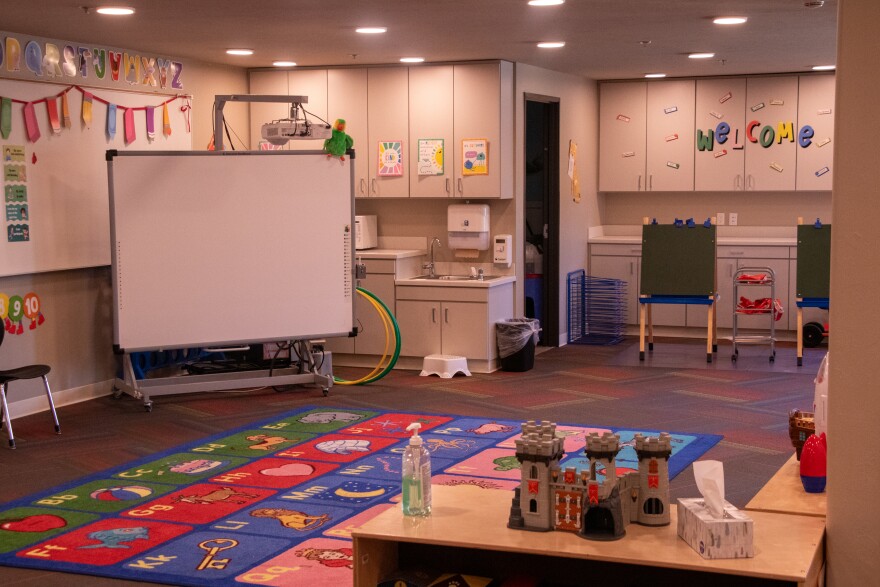
State officials have shown interest in the model and are working to make that process less complicated.
Rep. Trey Caldwell (R-Faxon) authored HB 2749 this year to create an intergenerational education revolving fund for the Oklahoma Health Care Authority that would set up a competitive grant program to expand the model by facilitating improvements in nursing homes.
It also stated that grants could be awarded in the form of rate adjustments to nursing facilities participating in Medicaid. Caldwell’s bill stalled in the Senate but will be up for consideration again next year. He said Senate author Chuck Hall (R-Perry) is committed to getting it done.
Caldwell said the topic is personal to him. He recalled visiting a facility that had an intergenerational program when his family was looking for a place for his dad. He said the residents’ quality of life seemed better.
“That's always stuck in the back of my mind,” Caldwell said. “And I just remember thinking to myself, man, if I'm ever in a position to do something, this is such a beautiful idea, because you're filling multiple needs.”
As a part of the state’s multisector plan on aging, also known as Aging Our Way, Oklahoma Human Services is also developing a statewide intergenerational connection coalition. A DHS spokesperson said in an email it would bring together stakeholders, including schools, senior centers, youth serving organizations, adult day centers, assisted living communities, child care programs, and local governments to expand opportunities for meaningful intergenerational engagement.
Joncia Johnson, the Aging Initiatives Director for Aging Our Way, said they hope to build a pilot program of intergenerational models in partnership with long-term care facilities, child care centers, schools and other groups. They also want to gather data on how the model benefits multiple generations.
“It being purposeful, I think, is definitely what is needed so that we can replicate these models,” Johnson said.
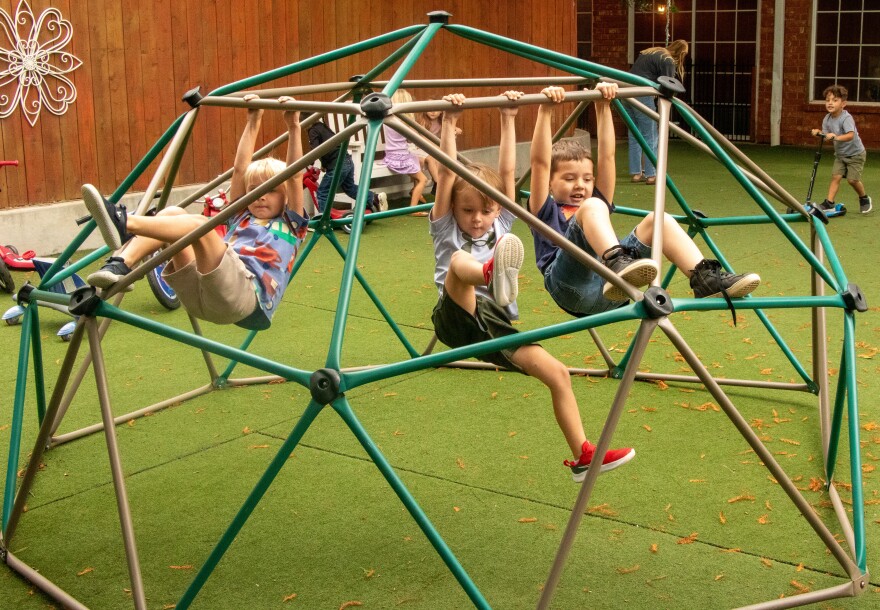
Back at Golden Age, residents are still beaming after their visit with the pre-K students. A resident named Wanda, 96, spoke more about the item she shared, which was a cross fashioned from a tree that fell on the Cimarron River.
She’s lived in Guthrie on and off ever since she married her husband at 19, who recently died in March. She loves everything about where she lives – the trees, her house, which sits a few blocks away and the Oklahoma Territorial Museum, where she used to volunteer. She also loves watching the children in her community grow up.
“Isn’t that wonderful? I get to watch them out of my window in my apartment. I sit over at the couch so I can watch the mommies and daddies bring them to school and then they pick them up in the afternoon, and then I watch them when I go to the dining room when they're on their recess,” Wanda said.
She said she thinks they will make a wonderful next generation, especially thanks to programs like these.
StateImpact Oklahoma is a partnership of Oklahoma’s public radio stations which relies on contributions from readers and listeners to fulfill its mission of public service to Oklahoma and beyond. Donate online.



